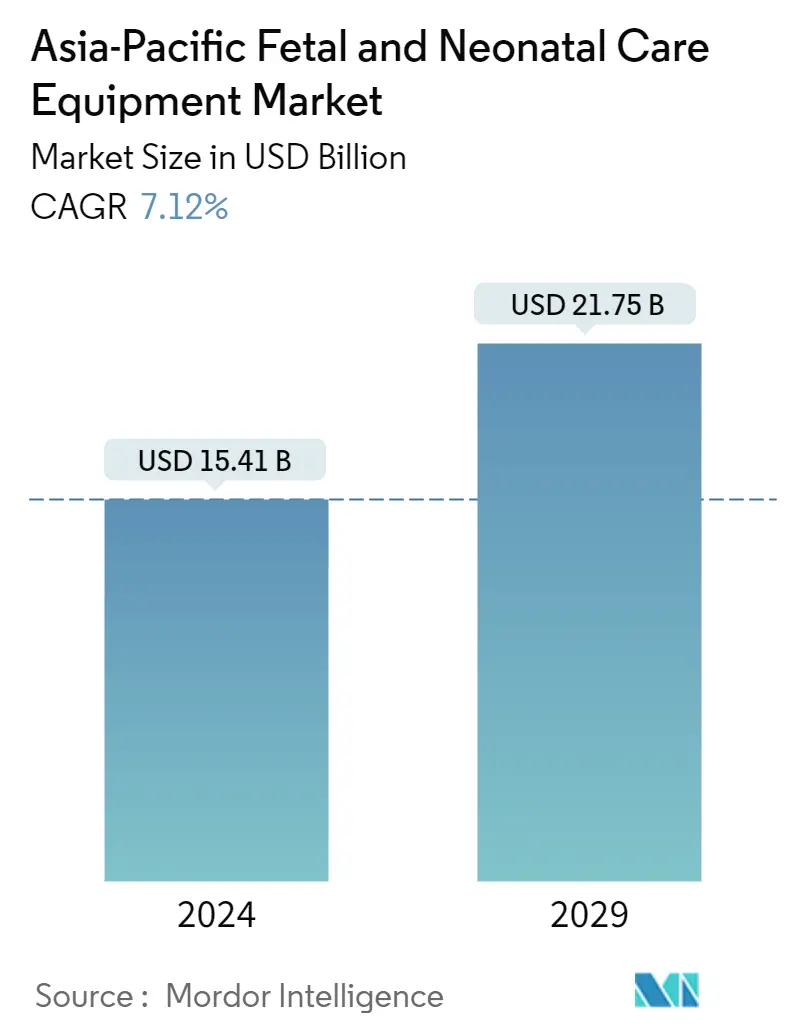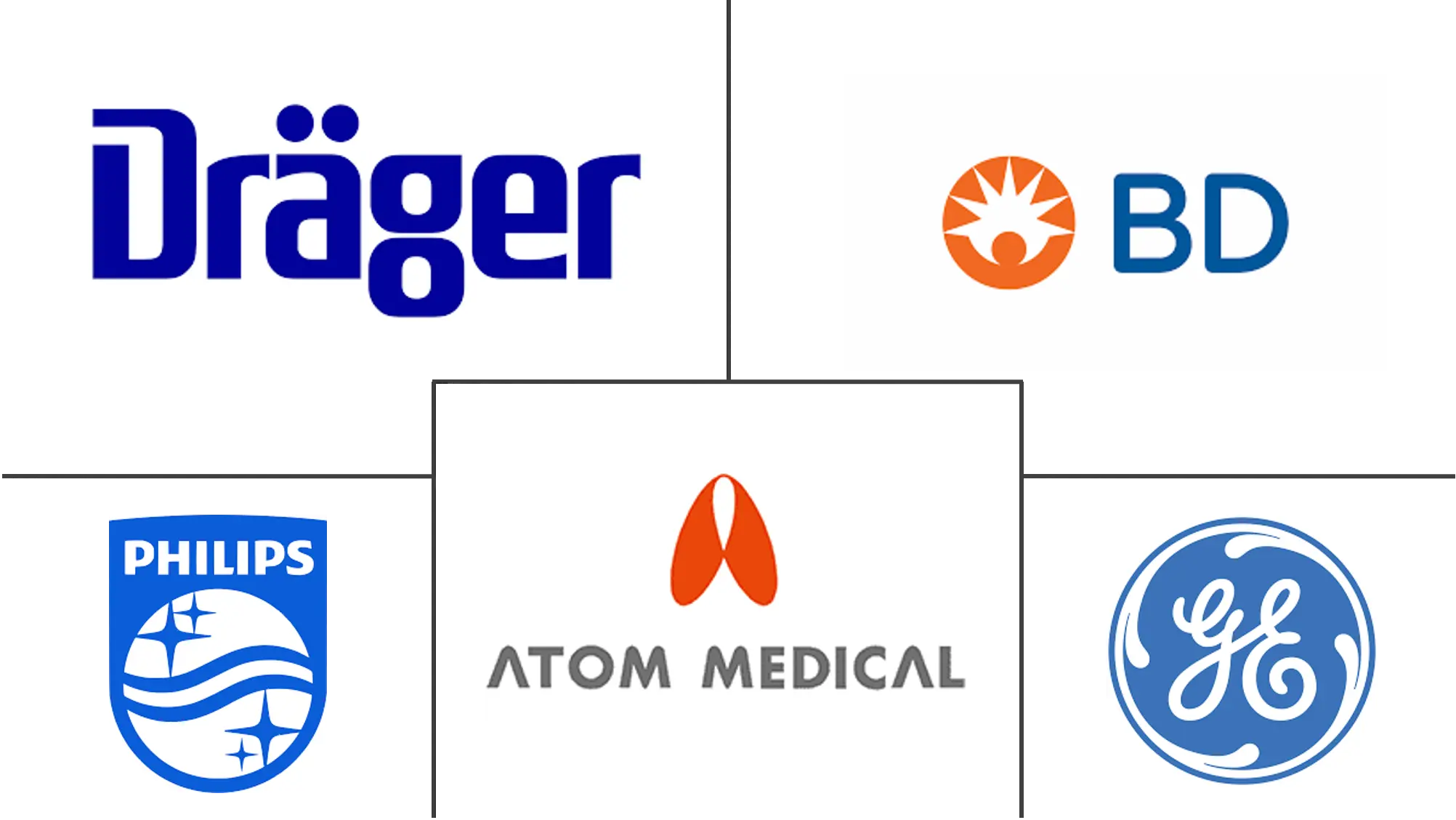Market Size of Asia-Pacific Fetal and Neonatal Care Equipment Industry

| Study Period | 2019 - 2029 |
| Base Year For Estimation | 2023 |
| Forecast Data Period | 2024 - 2029 |
| Market Size (2024) | USD 15.41 Billion |
| Market Size (2029) | USD 21.75 Billion |
| CAGR (2024 - 2029) | 7.12 % |
Major Players
*Disclaimer: Major Players sorted in no particular order |
Need a report that reflects how COVID-19 has impacted this market and its growth?
Asia-Pacific Fetal and Neonatal Care Equipment Market Analysis
The Asia-Pacific Fetal and Neonatal Care Equipment Market size is estimated at USD 15.41 billion in 2024, and is expected to reach USD 21.75 billion by 2029, growing at a CAGR of 7.12% during the forecast period (2024-2029).
The global pandemic of COVID-19 is predicted to have an impact on the market for fetal and neonatal care equipment. Pregnant women should have routine prenatal checks at 12, 20, 28, and 36 weeks of pregnancy, according to the Indian Council of Medical Research (ICMR) guidelines from 2020, unless they meet the self-isolation criteria. Appointments for women who have had COVID-19 symptoms can be postponed until seven days after the onset of symptoms unless the symptoms become severe. During the COVID-19 outbreak, according to an article published in the BMJ Journal in November 2020 by experts from the University of Tokyo, there was a dramatic decline in the number of intensive newborn care across Japanese acute care hospitals. The study also observed a drop in the number of preterm births (before 34 gestational weeks and between 34-37 gestational weeks). However, as the population has begun to cope with the pandemic, regular prenatal checkups and neonatal care is expected to boost, which is expected to significantly impact the market.
The key contributors to the market growth are the increasing number of preterm births and the technological advancements in care equipment. There was a significant regional divide between countries in eastern Asia (such as China and the Republic of Korea) and southern Asia (Bangladesh, India, Nepal, Pakistan, and Sri Lanka). China had the lowest low birth weight rate at 2.3%, while Pakistan reported a rate of 31.6%.
The technological advancements in infant and maternal care products are also a major driver for the growth of the market. Many technologies that monitor an infant's and the mother's vital signs like heartbeat are being used in rural areas where access to advanced hospital care is missing. For example, in November 2021, Abdul Latif Jameel General Trading Co. and Melody International collaborated for the distribution of Melody's innovative iCTG remote fetal monitor, a cloud-based mobile wireless fetal monitoring platform. A study published in the Journal of Pediatrics in 2020 found that nearly 6.2% of infants born with very low birth weight in Japan had birth defects such as chromosomal abnormalities, congenital heart defects, congenital malformation of the digestive system, Trisomy 18, Down syndrome, and cleft palate. Better outcomes necessitate genetic counseling and prenatal and neonatal care. As a result, the rising prevalence of preterm births and the introduction of novel technologies in the industry are likely to propel the Asia-Pacific fetal and neonatal care equipment market forward during the forecast period.
